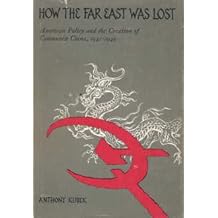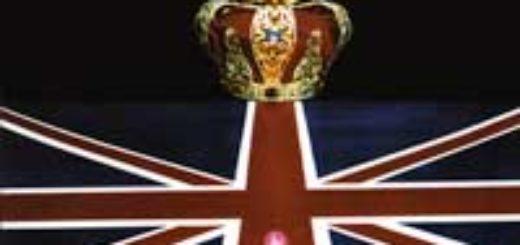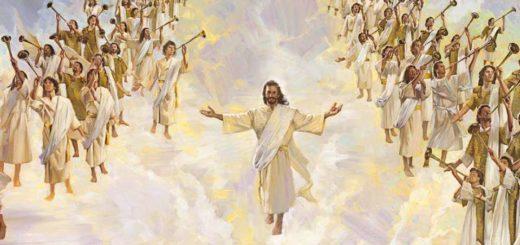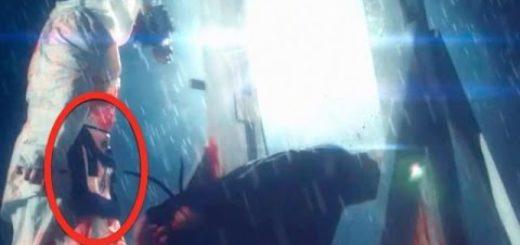You’re Living in a Synagogue of Satan Nation and We’re ALL Gonna DIE!!!
by Admin · Published · Updated

Customer reviews
How the Far East Was Lost: American Policy and the Creation of Communist China, 1941-1949
1963
Hardcover
Kindle Edition
Top customer reviews
5.0 out of 5 starsThe truth of the U.S. role in putting Mao, the Soviet agent, into power in China.
April 12, 2017
September 19, 2013
SINCE THE EARLY TWENTIES JAPAN WAS A BULWARK AGAINST THE MARXIST DISEASE IN THE FAR EAST
THE JAPANESE LEADERS UNDERSTOOD MUCH BETTER THAN THE WEST THE BOLSHEVIK THREAT FROM THE
SOVIET UNION AND ITS INFILTRATION IN CHINA AND MONGOLIA ,AS A RESULT OF THAT ,THE JAPANESE OCCUPIED
MANCHURIA IN 1931 TO PREVENT IT TO FALL INTO THE RED ARMY.
THE ROOSEVELT ADMINISTRATION FROM THE VERY BEGINNING STARTED TO ANTAGONIZE JAPAN AND THAT FINALLY
LED TO WAR.
IN 1945 WHEN JAPAN SURRENDERED THE MAIN OBSTACLE TO STALIN WAS REMOVED IN THE FAR EAST
BUT IT WAS NOT ONLY JAPAN, ALSO NATIONALIST CHINA THE MAIN USA ALLY IN THE FAR EAST WAS ANTAGONIZED
BY A DELIBERATED CAMPAIGN OF LEFTWING ELEMENTS INSIDE THE ROOSEVELT AND TRUMAN ADMINISTRATION,
LIKE FOR EXAMPLE OWEN LATTIMORE OF THE INSTITUTE OF PACIFIC RELATIONS ,THAT ULTIMATELLY
CULMINATED WITH THE DOWNFALL OF THE KUOMITANT REGIME IN CHINA AND THE VICTORY OF THE REDS LED
BY MAO TSE TUNG, THE RESULT: A VICIOUS TYRANNY THAT LEFT THIRTY MILLIONS VICTIMS,THE DISASTROUS
GREAT LEAP FORWARD OF THE LATE FIFTIES THAT PRODUCED THE WORST FAMINE IN CHINESE HISTORY,THE MADNESS OF THE CULTURAL REVOLUTION(1966-1976),THE INVASION AND GENOCIDE OF THE TIBETAN PEOPLE,
THE KOREAN AND VIETNAM WARS, THE BLOODY CONFLICTS IN MALAYA , INDONESIA AND BURMA AND THE AGGRESION AGAINST INDIA.
ANOTHER BOOK ABOUT THE PACIFIC WAR THAT I LIKED IS THE EMPIRE OF THE RISING SUN BY JOHN TOLAND
June 17, 2018

November 30, 2015
The answer is here
September 7, 2007
Anthony Kubek’s book is a well researched, well documented book clearly explaining why the Chinese Communists were able to get power in 1949. This book gives the reader excellent background to the diplomatic background in the Orient from c. 1920 through World War II and thereafter. Readers are also introduced to the geography of Eastern Asia including Siberia which helps understand the diplomatic history of this area. Another useful asset of HOW THE FAR EAST WAS LOST is that Kubek gives a surprisingly good account of the background to the Japanese attack on Pearl Harbor on December 7, 1941.
Kubek introduces readers to the diplomatic and economic situation regarding the Chinese, the Soviets, and the Japanese during the 1930s up to the attack on Pearl Harbor. Kubek explains that the Japanese were a bulwark against the Chinese Communist guerrillas and the Soviets. Japanese diplomats made repeated friendly overtures to the U.S. when FDR & co. complained about Japanese intrusions in China in the 1930s. The Japanese kept Soviet expansion under control while protecting their own interests in parts of China which the Japanese desparately needed for natural resources. This section of HOW THE FAR EAST WAS LOST is crucial to understanding the diplomatic problems in Eastern Asia. The Japanese population was approximately half of that of the U.S., and these people were living in an area approximately the size of California. Japanese natural recources were the equivalent of those of the state of Mississippi. Any threat to these vital recources in Mancuria and other Japanese controlled areas of China controlled by the Japanese was seen as a life-and-death struggle. Those who complained about harsh Japanese conveniently that Japanese actions were similiar to those of the Westerners who controlled China from the second half of the 19th. century until the 1920s. The only sin the Japanese committed in China, compared to those of the previous Western imperialists in China, was that the Japanese were the new player in the imperialist game in Eastern Asia.
Kubek then gives readers a brief but solid background to the Japanese attack on Pearl Harbor. Anyone who is bored with the tired cliches offered by apprehensively textbook writers too timid to deal with honest history would find Kubek’s brief remarks re the attack on Pearl Harbor enlightening and of serious historical interest.
Kubek’s assessment of complete destruction of the Japanese by FDR & co. is important. By totally eliminating the Japanese, FDR and his advisors made the emergence of Big Communism in Eastern Asia almost inevitable. Kubek cites “The Mac Arthur Memorandum,” dated February of 1945, which was clear that the Japanese were ready to surrender in early 1945. Mac Arthur was rebuffed by FDR & co. which continued the war and brought the Soviets into the war against Japan in early August of 1945 which made the Chinese Communists so much stronger. The use of nuclear weapons against the Japanese was totally unnecessary,and their elimination left a weak Chinese Communist movement much stronger than would have been otherwise.
Another useful part of this book is Kubek’s detailed examination of the secret agreements made at the Yalta Conference in February, 1945 which favored Soviet hegemony in Siberia and China at the expense of Chaing Kai-shek and the Chinese Nationalist with whom the Chinese Communists were contending for power. Chaing did not know that important Chinese bases and strategic facilities were given to the Soviets from which they armed and assisted the Chinese Communists. One should note that General Haley and others who wanted access to these secret agreements were denied such access which was unconstitutional.
Other attempts to get an honest view of what was happening in China and events leading to the Japanese attack on Pearl Harbor were thwarted when General Marshall, later made Sec. of State, was suddenly sent to China to negotiate between the Chinese Communists and Chinese Nationalists. One should note Kubek’s assessment of these negotiations. When Gen. Marshall first went to Chinas in 1947, the Chinese Communists had a poorly equipped army of appriximately 300,000 troops. By the time Marshall was done, the Chinese Communists had an army of over 2,000,000 well equipped troops, and many had captured Japanese weapons which were supposed to surrendered to Chaing and his government.
Kubek does not avoid the harshness and corruption in Chaing’s government, and Kubek does not idealize Chaing. Yet, as Kubek clearly indicates, Chaing Kai-Shek was ALWAYS loyal to the U.S. Chaing could have easily enlisted his support for the Japanese in an attempt to thwart the Chinese Communists and especially since U.S. policy makers were underminning him. Yet, Chaing never did this.
The last sections of the book are Retrospect and The Epilogue which are well worth reading. Kubek not only deals with failures in China, but these two sections of the book show insight, logical reasoning, and thoughtfulness.
This reviewer’s only criticism of the book is Kubkek’s thesis. This reviwer does not view that China was anyone to lose. The days of the Westerners in China were numbered. Had Chaing Kai-shek’ forces won the civil war in China, the Westerners, including the U.S., were on their way out of China. Chaing had a book published in 1943 titled CHINA AND THE WEST in which was clear that the Chinese were going to end Western dominance. The Chinese Reds were clever enough to use this book to denounce Chaing even though they were planning to do the same thing.
In spite of this difference of opinion, Kubek’s book is well worth reading. His research is meticulous, and his prose is clear and concise. The late Harry Elmer Barnes plugged this book with the remark that it was the best book on the rise of the Chinese Communists from a resolutely convervative point of view. Anyone who wants to examine solid history based on documents and sources and solid research should read this book. It is an excellent book.
October 29, 2008
A warning unheard
Kubek, Anthony 1963 How The Far East Was Lost. American Policy and the Creation of Communist China, 1941-1949. Henry Regnery Publishing, Chicago Library of Congress Number 63-12892; ASIN B000OMMQ2O Page 378 “No hoax has been more complete and convincing than that which deluded the American people from coast to coast into the belief that the Chinese Communists were a mild edition of agrarian reformers.” One notes with sorrow that a similar hoax even to the inclusion of some common authors, journalists and newspapers (including the New York Times, and Theodore White) would be perpetrated on the U.S. and the people of Cuba. This book should have been a warning, to us in Cuba in the 1950s and yet it went essentially unheard.
















Comment Report abuse